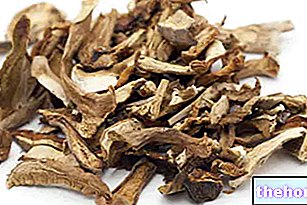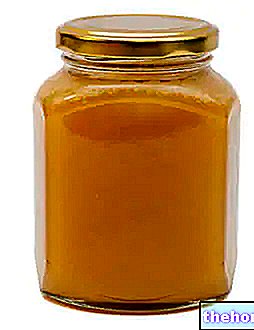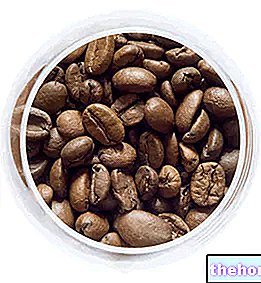Generality
Miso is a typical oriental fermented food.
In its "natural" form it has a creamy and spreadable consistency, but more than for direct use, it is mainly used as a condiment or ingredient in soups.

Miso soup
Miso is also marketed in freeze-dried form; however it does not have the same chemical and taste characteristics of the fresh product.
The traditional ingredient of miso is soy, but currently cereals, pseudocereals, other legumes or different seeds are also used (barley, rice, buckwheat, millet, rye, wheat, hemp seeds, cycas, chickpeas, corn, azuki beans , amaranth and quinoa).
There are different types of miso, which are distinguished by the degree of fermentation, the main ingredient, etc. The many variables also affect the color, flavor and body of the product.
Originating from the Chinese gastronomic culture (known as dòujiàng), miso was imported by the Japanese in the 13th century; in the East, thanks to its nutritional composition, it played a decisive role in the survival of the poorer social classes during the feudal era. Following the process of globalization, today it is known and distributed in almost all countries of the world.
Miso has a good chemical profile and can be consumed by most people. Thanks to its protein, salt and vitamin content, it is widely used in the vegan diet.
Production
Miso is obtained by fermentation of starch by fungal microorganisms; the most widespread belongs to the Genus Aspergillus, species oryzae (binomial nomenclature Aspergillus oryzae). Secondly, small bacterial colonies that are beneficial (probiotics) or harmless to human health also grow.
NB: L "A. oryzae it is the same mold (filamentous fungus) used in the food industry to obtain soy sauce, sake, rice vinegar, etc.
The miso production cycle could be summarized as follows:
- Seed collection.
- Depending on the botanical and miso species to be obtained, a refining method can be applied.
- Cooking by boiling the seeds in water or steam.
- Grinding.
- Addition of koji (microbial culture).
- Adding salt or salt water.
- Fermentation: it can last only 5 days or even several months (4, 12 or 24), depending on the specific case.
Nutritional Characteristics
“Natural” miso is considered a live food, as it contains many beneficial microorganisms. In addition to molds Aspergillus, miso develops colonies of Tetragenococcus halophilus And Lactobacillus acidophilus which are considered probiotic bacteria (useful for the numerical reinforcement of the intestinal bacterial flora).
To take advantage of this characteristic, miso should be eaten raw or at temperatures below 72 ° C (to prevent the heat from destroying them), possibly away from meals (to prevent gastric acids from destroying them).
The most famous nutritional characteristic of miso is the alleged abundance of vitamin B12 (cobalamin). Potentially deficient in vegetarian diets (especially vegans), this vitamin is particularly relevant in the diet of pregnant women and subjects suffering from anemia (megaloblastic). However, some experimental research has challenged the hypothesis that miso may be abundant in this nutrient.
Miso has a very high salt content. This ingredient consists of 40% sodium, a mineral whose excess can be responsible for:
- Increased risk of hypertension.
- Aggravation of gastritis.
- Worsening of some kidney syndromes.
- Increased urinary excretion of calcium.
This means that miso should be consumed in moderation by those suffering from these ailments.
ATTENTION! Miso made with barley, wheat, rye, oats, spelled, spelled and sorghum contains gluten and cannot be used in the celiac's diet.
Nutritional values

Types
Young miso has a light, almost white color, subtle organoleptic characteristics and a smooth (almost gelatinous) texture.
Cured miso has a dark brown color, stronger taste characteristics and a grainy texture.

Seasoned Miso
Intermediate miso can have a yellow or reddish color.
The most common types of miso in Japan are:
- Shiromiso: white miso.
- Akamiso: red miso.
- Awasemiso: miso.
Other variables that affect the characteristics of miso are: degree of grinding, place of production, season, ambient temperature, percentage of salt, variety of koji and type of container used for fermentation.
Conservation and Use
Miso is marketed in hermetically sealed containers and after opening it needs to be stored in the refrigerator. The shelf life is a few days; in vacuum it goes beyond a week.
The most correct gastronomic use of miso is raw; alternatively it can be dissolved in hot foods (for example in soups), but at temperatures below 72 ° C. This precaution is aimed at keeping bacterial colonies and positive molds intact. of food. It is no coincidence that "natural" miso is also considered a probiotic food.
Miso is an essential ingredient of many Japanese recipes and gives flavor, taste and aroma. The most famous is miso soup, eaten daily for breakfast (with a bowl of white gohan rice) by most of the Japanese population.
It is used in many other types of soup and broth pastes, including: ramen, udon, nabe, and imoni. Typically, these dishes have the term “miso-” prefixed to the specific name (for example, miso-udon).
Miso is also a basic ingredient for some sweet sauces of varying consistency; the most famous is called mochi dango. These glazes are mainly used during local or national festivals, even if their commercial availability is almost constant.
Soy is used to make a brine called misozuke. These preserves mainly consist of cucumber, daikon, hakusai (Chinese cabbage) or eggplant. Compared to traditional pickled foods, they are sweeter and less salty.
Other culinary uses of miso are:
- Dengaku: sweetened miso used for grilled foods.
- Yakimochi: grilled mochi coated with miso.
- Braised vegetables and mushrooms with miso.
- Sake marinades: used for fish and chicken.
- Corn on the cob in foil.
- Sauces: for example misoyaki.
Warnings
Miso is a food that can also be prepared at home. However, this is a fairly risky recipe in case of pathogenic contamination.
If on the one hand miso is enriched thanks to the metabolism of beneficial fungi and bacteria, on the other hand, colonies of harmful microorganisms can grow.
The most fearsome are some types of Aspergillus (same Genus of "oryzae), in particular the "TO. flavus and the "TO. Parasiticus, as they are capable of releasing toxic compounds.
These unwanted substances are called aflatoxins and are responsible for severe poisoning and cancerous mutations (especially of the liver).
Given the possibility, it is advisable to purchase a packaged koji based on Aspergillus oryzae or alternatively of Rhizopus oligosporus. The result is guaranteed by respecting these two conditions:
- Use common white rice as a raw material.
- Leaving it to ferment at 25 ° C for about 90 days.
Bibliography:
- Food Microbiology - page 202 - James M. Jay, Martin J. Loessner, David A. Golden - Springer.




























